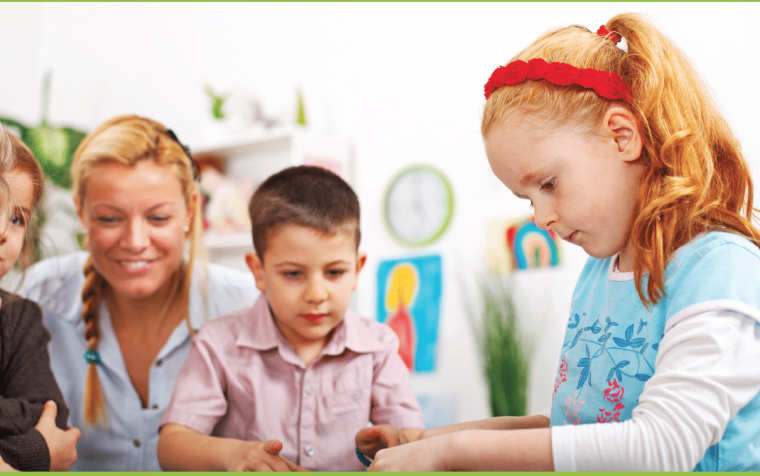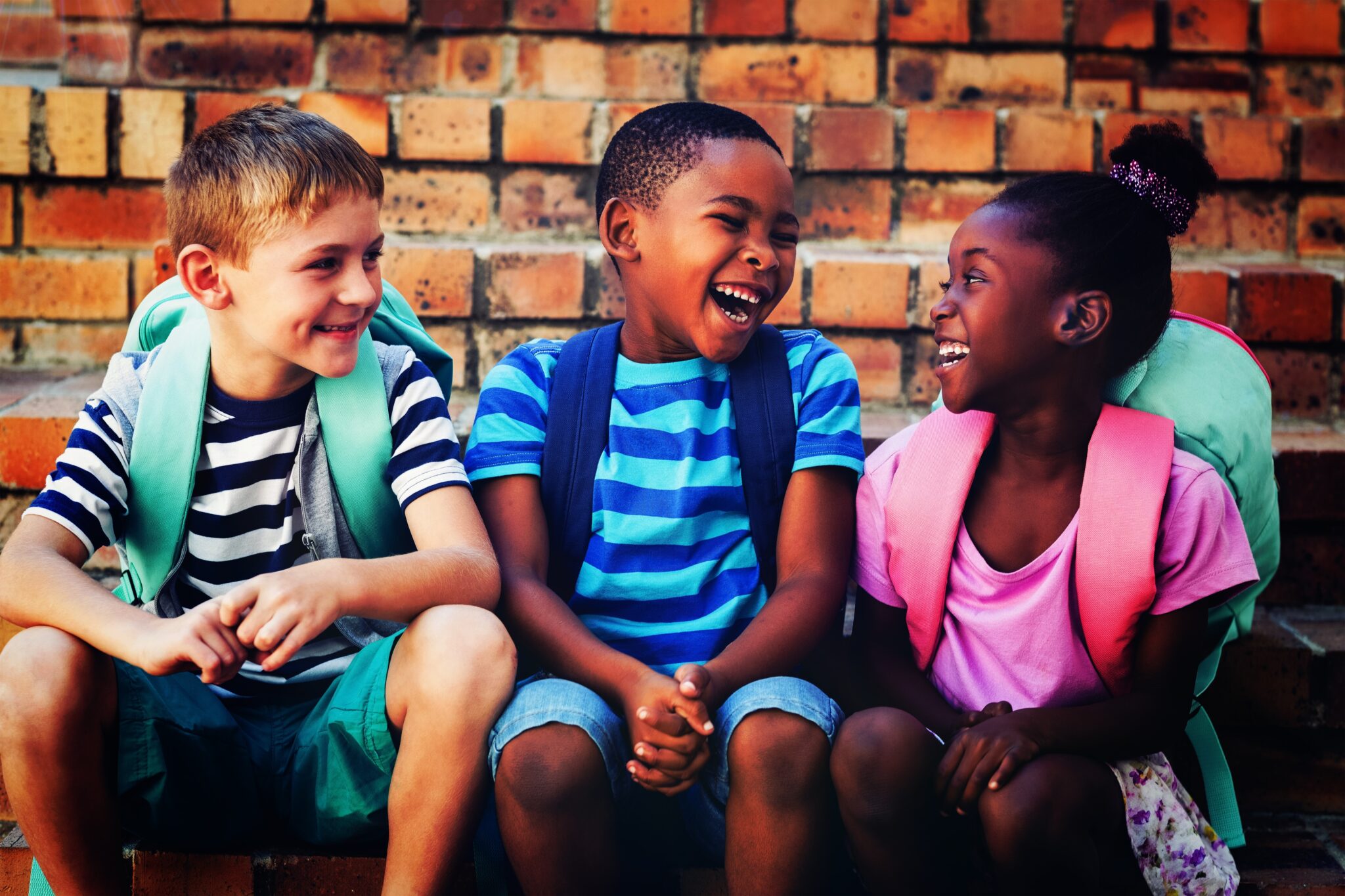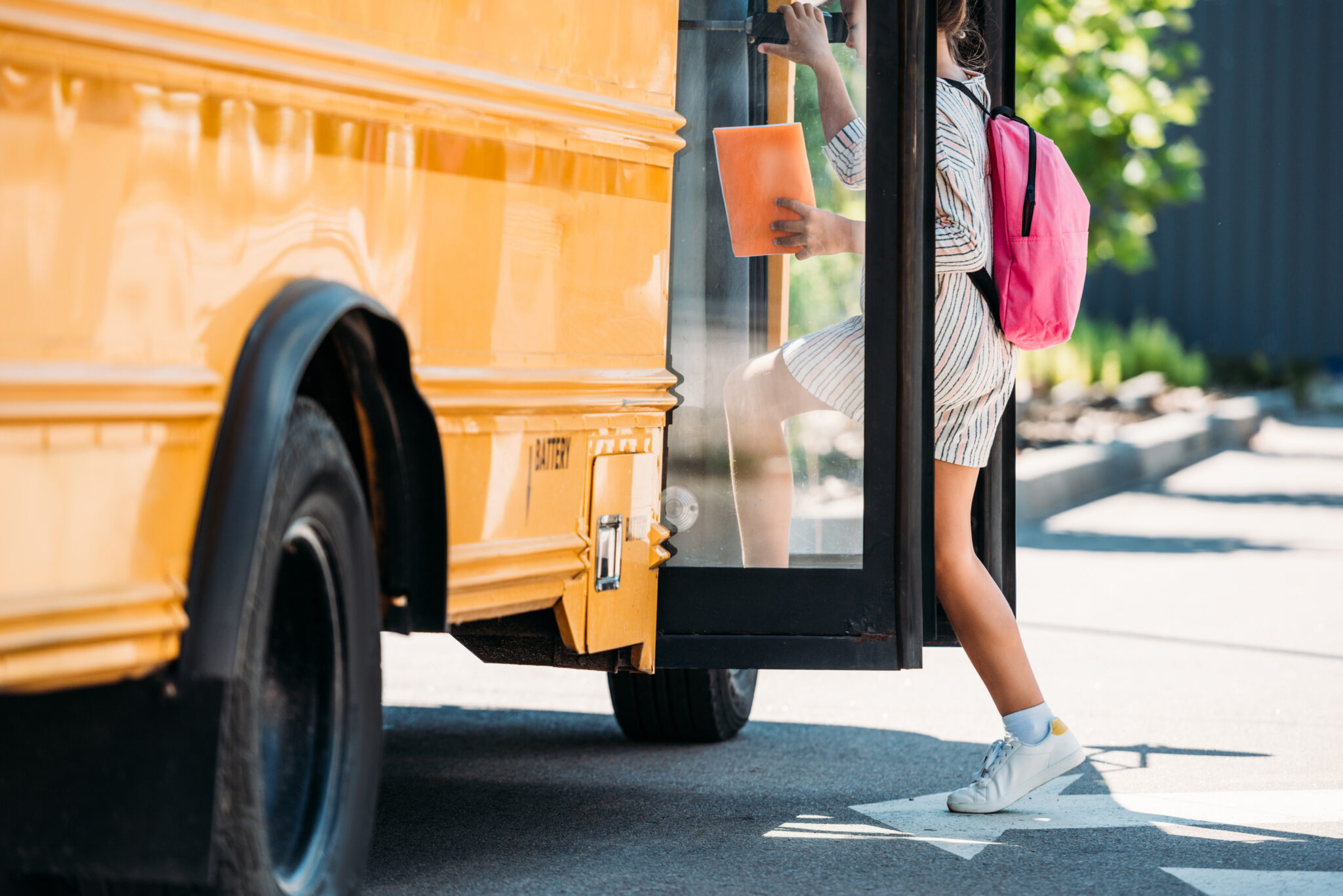If you have worked with gifted students for pretty much any period of time, then you have undoubtedly heard questions like, “Do I have to work in a group?” or “Can’t I just do this by myself?” Although gifted kids typically excel at a range of academically related things, many struggle with collaborating.
I think that this issue stems from gifted students often having a series of really bad experiences with working in groups. If we consider what typically happens in the regular classroom, we can see that gifted kids are routinely placed in mixed-ability groups in which there are a full range of abilities represented. In these settings, gifted students can become quickly frustrated that the thinking is not going as efficiently or at the level of quality that they would like. Gifted kids start feeling that it would just be better for everyone in the group if they took charge and did the whole project themselves. This really benefits no one that is involved, and as a result, everyone has a bad experience and learns little from the lesson.
Another issue is that the assigned task is often not at an appropriate challenge level for gifted learners, as it is most likely designed to meet the academic needs of all learners in the group. Although gifted kids can experience success doing all of the work themselves for quite some time, at some point, somewhere along the way, they are going to encounter a task that is so challenging that they are not able to accomplish it on their own. However, if they have not learned how to successfully cooperate with others, then they may never be successful.
Considering possible future occupations, Pate (2020) reported that the skills that companies are most in need of include creativity, persuasion, collaboration, adaptability, and emotional intelligence. Focusing on collaboration, what are ways you might develop this important and valuable skill in your students?
According to Sandra Kaplan (2014), “It is critical to remember that gifted students work diligently to form a definition of the self as an achiever,” and when they work in a group there is a “loss of identity” as an achiever (p. 261). Kaplan suggested that educators often incorrectly assume that gifted and talented students will have easy successes in learning to become collaborators. On the surface, this makes sense, given that gifted students experience so many other easy successes in school. However, learning to be an effective collaborator is a skill that needs to be taught. For gifted kids to learn how to collaborate, they must first be taught how to cooperate with one another.
There are subtle and important differences between cooperation and collaboration that educators should consider, and yet they are often used synonymously.
Collaboration is a coordinated, synchronous activity that is the result of a continued attempt to construct and maintain a shared conception of a problem.
Cooperation is accomplished by the division of labor among participants as an activity where each person is responsible for solving a portion of the problem. (Power, 2017, para. 3–4)
In thinking of the school environment, an example of cooperation might be when a group is assigned a task and the group divides the task into separate parts and each member independently completes a part of the task. This often results in a project that is uneven in its completion. In this case, educators may mistakenly assign a single grade to the group even though it was actually a series of parallel and independent projects. “True” collaboration would involve active participation and contribution of all members toward a single solution or outcome in which one would not be able to easily discern exactly who did what part.
One way to teach gifted and talented students to become better collaborators is for them to play board games that provide them with ungraded, low-risk challenges that require them to work together toward solving a problem. Growing up as a student identified as gifted and served in gifted programs, some of my fondest memories were when I had the opportunity to play board games in class. As a teacher of the gifted, incorporating a variety of games provided an excellent way to teach students how to learn and follow rules, think strategically, and basically get along with one another. Playing games with others requires students to use their reasoning on a cognitive and affective level.
An issue that I often faced with my students is that the vast majority of games are competitive and result in only one person winning the game, leaving the other players as sore losers. Although learning to lose (and win) gracefully is an important life lesson, it does not necessarily teach students how to collaborate. So instead of utilizing traditional board games that teach strategy and result only in competition, I would like to recommend exploring the relatively new and growing genre of cooperative board games.
Unlike traditional board games like Monopoly and Risk, in which players compete against each other to become the one winner of the game, cooperative board games have all of the players working together to win. In cooperative board games, players either all win or all lose, and most of the time they all lose, as these games tend to be incredibly challenging. Also, in cooperative board games players are typically assigned a special ability that none of the other players possess. The team must discuss how best to leverage each of these talents to collectively accomplish the goal.
The sections that follow share some games that teachers may use to promote collaboration and teach skills necessary for students to understand the real meaning of collaboration.
Pandemic
In 2009, Pandemic (https://www.zmangames.com/en/products/pandemic) by Z-Man Games was a nominated for the coveted and highly respected Spiel des Jahres, or Game of the Year award. Although there are other awards given for games, the Spiel des Jarhres represents significant innovation in gaming and is essentially the Oscars of the annual game awards. It is quite an honor for a game to be nominated.
One of the earliest and most well-known cooperative board games, Pandemic was designed by Matt Leacock and ushered in a whole new way to play a game. At first glance, the game board looks a lot like Risk, with its map of the world, but you quickly realize that it is something altogether different. One team of players is the only thing standing in the way of deadly diseases that threaten the world. Two to four players work together as members of a worldwide disease control team who must keep four deadly diseases from spreading across the globe. Team members travel from city to city collecting cards to discover a cure for each disease, battling against the clock to prevent outbreaks and epidemics from spreading. The fate of humanity is in players’ hands.
Setup for each new game is randomly generated so that a different set of cities is infected each time. Players are also randomly assigned one of seven different roles that grants a special ability that no other player possesses. For example, the Scientist needs only four (and not five) City cards of the same disease to “discover a cure” for that disease, while the Medic is able to remove all disease cubes from a city when treating a disease instead of just one.
When playing Pandemic, you should note and perhaps remind those playing the game of a very important rule. According to the directions, “Players should freely give each other advice. Let everyone offer opinions and ideas. However, the player whose turn it is decides what to do.” This may prove to be a difficult challenge for many gifted game players. So, you should be on standby to quell any potential ill-will by reminding the team that it is only by working together that they will be able to save the world.
Pandemic is designed for two to four players and is recommended for ages 8 and above. Each game takes approximately 45 minutes. Z-Man games also has a series of expansion packs that add new roles and the ability to have to six players and introduce new challenges. More recently, sequels to Pandemic have been created that set the game in different historical periods including Pandemic: Iberia and Pandemic: The Fall of Rome.
Forbidden Island
After the success of Pandemic, Leacock went on to design another cooperative board game, Forbidden Island by Gamewright (https://gamewright.com/product/Forbidden-Island). It was a Spiel des Jahres nominee in 2011 and offers an excellent and gentler introduction than Pandemic into the mechanics of cooperative gaming. In Forbidden Island, the team of players must work together to collect four hidden treasures and escape from a mysterious island before the island sinks into a watery abyss. The game board is comprised of 24 island tiles that are randomly arranged at the start of a new game, thus creating a new experience every time. As in Pandemic, players are randomly assigned one of six different roles, each with their own special ability that must be leveraged in order to successfully complete the mission. For example, players may only move horizontally or vertically, but the Explorer may also move diagonally, and the Diver may move through any tile that has been flooded during the game.
Forbidden Island was followed by two sequels, Forbidden Desert and Forbidden Sky, that are remarkably similar in their gameplay but offer new challenges and interesting twists from a story perspective.
For Pandemic, Forbidden Island, and Forbidden Desert, electronic or app versions of the games exist. When you are learning how to play these games—particularly Pandemic, which can be a bit confusing at first—I recommend using the app versions. This requires you to follow the rules and provides an in-depth tutorial on what is and is not possible in the game. It also allows for excellent solo play to develop strategy when a group is not available. However, you really lose out on the full purpose and potential of cooperative board games when playing solo. In addition, there is something that is quite refreshing about playing with a physical board game, rather than having yet another reason to interact with an electronic screen. Physical board games force you to interact with objects and other people in a face-to-face environment.
Magic Maze
A 2017 Spiel des Jahres nominee, Magic Maze from Dude Games (https://dude.games/catalogue/productline/5) introduced a few unique elements of gameplay. The general objective is that players must navigate four pawns through a developing maze composed of tiles, but instead of each player being in charge of a single pawn, as is the case in pretty much every other game that you have ever played, each player is responsible for determining a direction for all of the pawns. For example, one player can move any of the pieces any number of spaces to the left or up on the board, and another player might be able to move any number of spaces to the right or add new tiles to the maze. To make things more interesting, players race against a sand timer, and to make things really, really complicated, players are not able to talk while the time is running. Players may only “gaze intently” at another player indicating that they should make a move. Magic Maze also comes with a cartoonishly-large red pawn that players can place in front of another player when they really want to emphasize that the other player should make a move.
When moving one of the pieces onto a limited number of spaces marked with an hourglass, the timer is stopped and players may freely communicate with one another to devise a plan. However, they are not able to move any of the pieces. Once the timer resumes, the no talking rule goes back into effect. Magic Maze can really test a group’s ability to rely on one another to accomplish a common goal.
The Mind
A 2018 Spiel des Jahres nominee, The Mind by Pandasaurus Games (https://pandasaurusgames.com/products/the-mind) is a very unique card game. Working with a deck of cards numbered 1 to 100, two to four players are dealt the number of cards equal to the current level of the game. For example, one card in Level 1, two cards in Level 2, and so on. As a team, players must play all of their cards face up in ascending order, but here is where it gets tricky. As with Magic Maze, players must accomplish this without talking or passing any secret signals. Instead, players must try to anticipate what cards the other players have and work to predict the moves of their fellow players. At first, it seems like this should be an impossible feat, but players quickly learn to feel their way through the rounds by developing a sense of timing as a group. Along the way, players can earn extra “lives” and a limited number of special cards that allow everyone to discard the lowest card in their hand without penalty. Individual games move very quickly and can be a great way for a group to develop empathy and get in sync before starting a much more difficult project or task.
Just One
One final cooperative board game recommendation is the 2019 Spiel des Jahres winner, Just One from Repos Production (https://justone-the-game.com), which was recognized as being ingenious for its simplicity. For three to seven players, the object of this game is to make the active player guess a mystery word by writing down one-word clues on individual plastic easels with the provided dry erase markers. For example, four players might individually write down the words cake, bread, job, and person as clues. Any duplicate clues or variants of the same word are eliminated before sharing with the active player, who has one attempt at guessing what the mystery word is. The active player determines that the correct answer is baker. Game play continues through 13 rounds, with a new player becoming the active player in each round. A point is earned for each correct response. So, you could have groups competing against each other to see which one was able to successfully identify the most words in a round.
Although it seems that many gifted kids shy away from working with groups unless they absolutely have to, always going it alone may rob them of the developing the important skill E. Paul Torrance (Torrance & Shaughnessy, 1998) described as interdependence. Many gifted and talented students may never develop the ability to effectively collaborate with others. This has the potential to put them at a disadvantage in life. By not being offered the opportunity to participate as players in games that involve low-risk and the ungraded group challenges of such cooperative board games, gifted students may mistakenly believe that they can conquer any task individually. Yet, somewhere along the way, they will undoubtedly realize that there are some tasks that necessitate a team of people working together to accomplish. By playing more cooperative board games, educators can perhaps help gifted students realize that, in the words of Helen Keller, “Alone we can do so little. Together we can do so much.”
References
Kaplan, S. N. (2014). Collaboration: Assumed or taught? Gifted Child Today, 37(4), 261–263.
Pate, D. (2020). The skills companies need most in 2020—and how to learn them [Web log post]. https://learning.linkedin.com/blog/top-skills/the-skills-companies-need-most-in-2020and-how-to-learn-them
Power, L. (2017, June 6). Collaboration vs. cooperation. There is a difference. Huffington Post. https://www.huffpost.com/entry/collaboration-vs-cooperat_b_10324418
Torrance, E. P., & Shaughnessy, M. (1998). An interview with E. Paul Torrance: About creativity. Educational Psychology Review, 10(4), 441–452.
Brian Housand, Ph.D., is the coordinator of the Academically or Intellectually Gifted program at University of North Carolina Wilmington. Dr. Housand earned a Ph.D. in educational psychology at the University of Connecticut with an emphasis in both gifted education and instructional technology. He served two terms on the National Association for Gifted Children’s Board of Directors as a Member-At-Large. Along with his wife Dr. Angela Housand and Dr. Joe Renzulli, he co-authored Using the Schoolwide Enrichment Model With Technology. He is also the author of Fighting Fake News! Teaching Critical Thinking and Media Literacy in a Digital Age. Brian has worked in education as a classroom teacher, a teacher of the gifted, and a university professor for more than 20 years. Brian is a lover of technology, Star Wars, video games, and fonts, and he proudly identifies himself as a geek. You can learn more on his website at brianhousand.com and by following him on Twitter @brianhousand.






